Tale as old as… influencers?
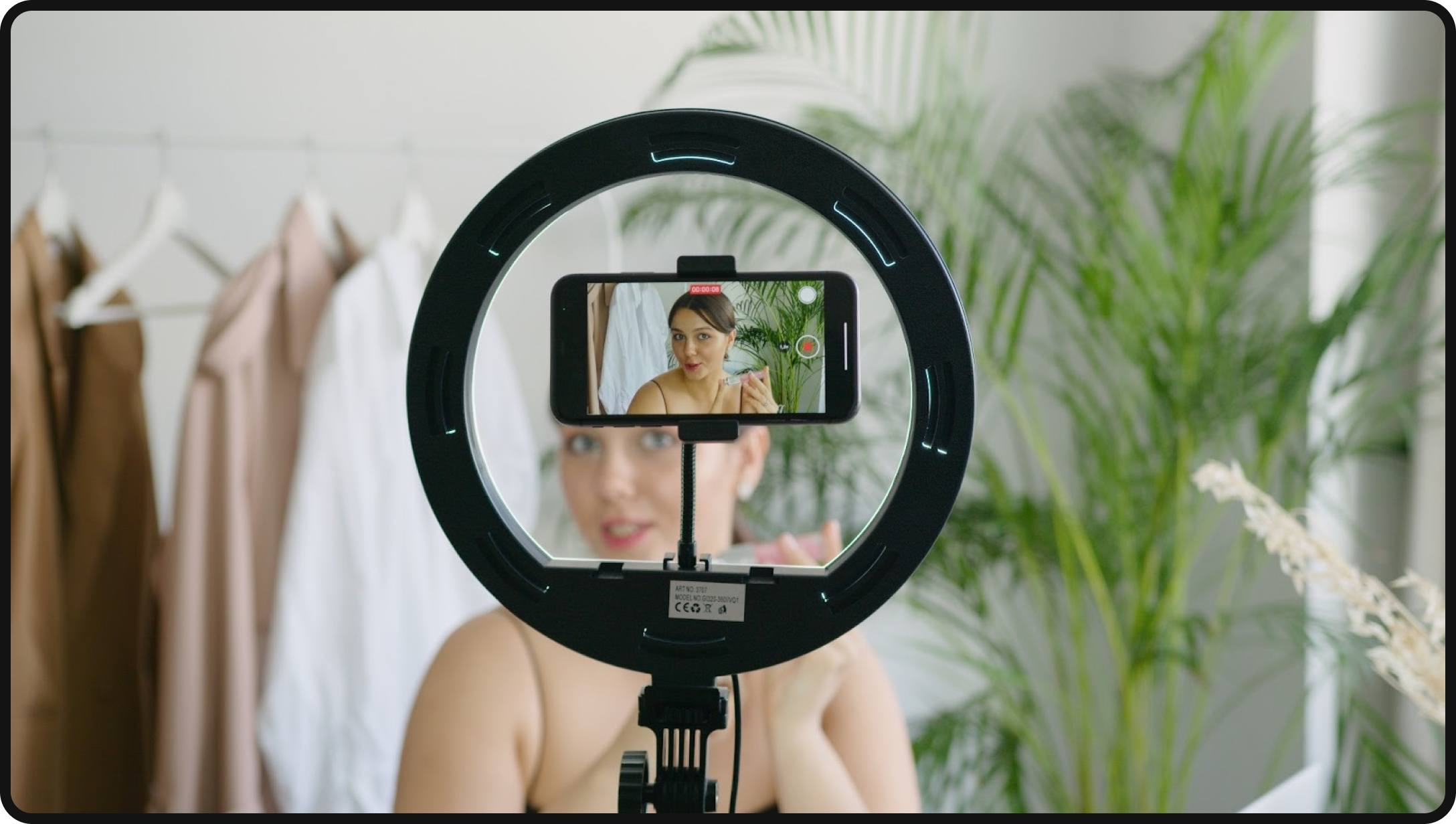
Believe it or not, the gladiators of Rome had something in common with the British royal family – both would be considered influencers of their time! Influencers are figures that others look towards to aid with their decision-making, and both queens and Romans alike fill that role. Ancient gladiators were known to promote things like articles of clothing, oil, wine, and weapons, causing their admirers to purchase from the makers of the products they associated with their champions. Fast forward a few centuries to now, where people believe Essie’s “Ballet Slippers” nail polish is the picture of elegance – because of its association with Queen Elizabeth’s manicure color of choice.
You won’t find influencers just in history textbooks or Buckingham Palace – they’re actually all around you, and due to the transition from traditional to digital marketing, you’ll mostly see them on major social media platforms. Their online presence has become so valuable that influencer campaign programs have become part of brands’ marketing strategies. So why should you be part of it, and how can you find relevant influencers to help meet your campaign goal on social platforms (and establish long-term relationships to continue your partnerships)?
The different types of influencers
First, know the numbers – there are 4 types of potential influencers to consider when searching for partners to add to your content creation plan.
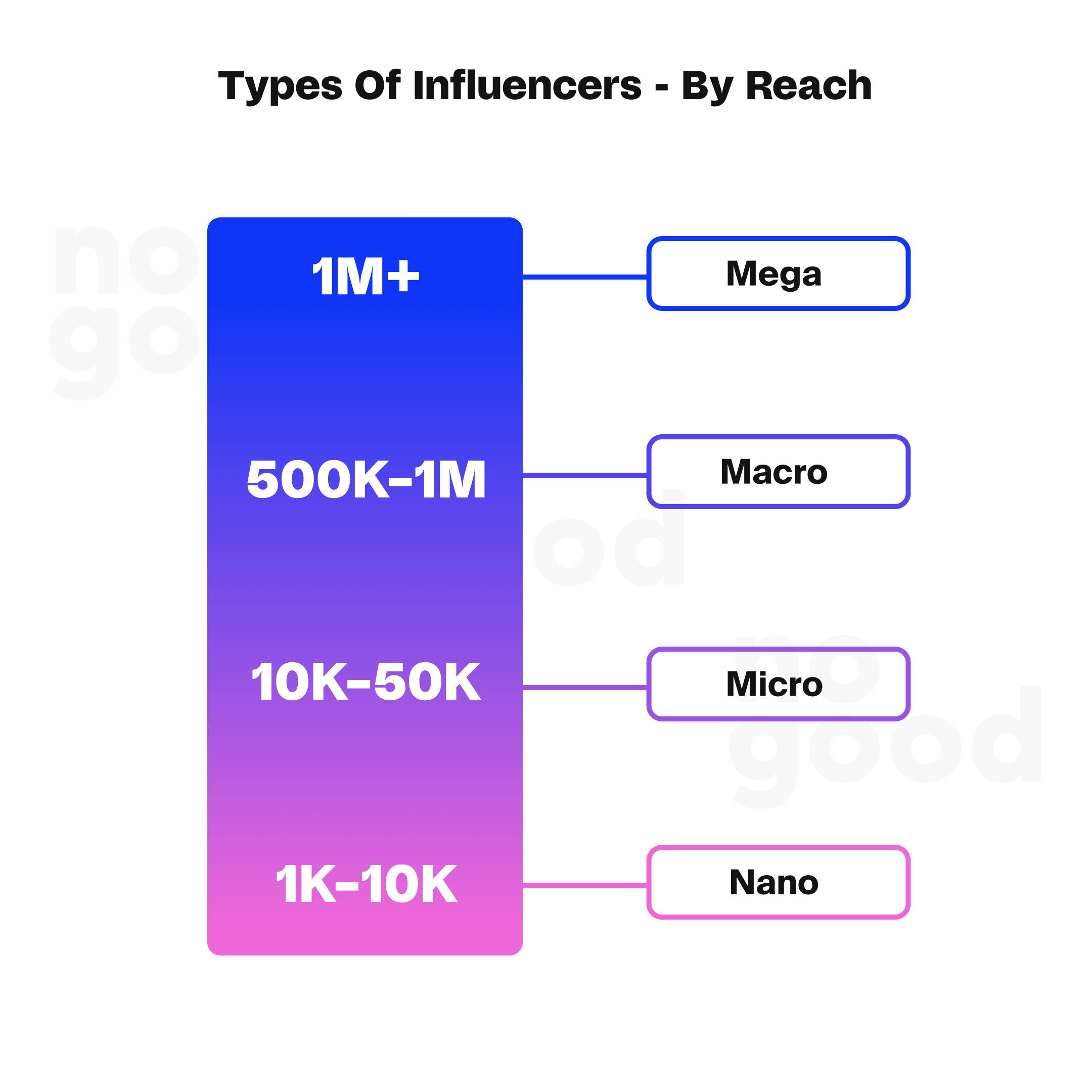
- Nano. With 100-10,000 followers, these people are your “everyday users.” Their pages may look a little more like yours and mine because, as smaller-scale influencers, they’re afforded the luxury of posting “normal” content, like photos of friends and family. What nano influencers lack in numbers, they can make up in loyalty. Those investing their time in watching nano influencers’ journeys will be open to hearing what they have to say – about themselves or your brand. These influencers are also financially desirable for brands to work with, as they are more likely to charge less for content made and/or accept your service or product as payment over monetary compensation.
- Micro. These creators have between 10,000-100,000 followers. Still leaning slightly towards the “organic” vibe the nano influencers display, micro-influencers know their audience well based on what took them from nano to micro and are more careful about the content they put out. Their rates will be a bit higher than their nano counterparts but are still one of the budget-friendly options for brands looking to get content made for less.
- Macro. Users with 100,000+ followers take their brand seriously. They’ve played the experimentation game the micro-influencers strive to surpass and have since perfected their craft to churn out content they know will resonate with their audience. Macro influencers know their worth and make it known to brands, too – their services are priced to reflect their success. However, they’re also more susceptible to accepting affiliate link marketing deals because their staggering followings make it easier to earn commissions.
- Mega. The lucky few with 1,000,000+ followers fall under the mega influencer category. These can include internet personalities experiencing skyrocketing popularity and celebrity influencers who rely on and ride on their past successes to draw in crowds effortlessly. Mentions from influencers like these often hold a lot of weight because of their status – this also means it’s harder to get a hold of these creators to collaborate (and with millions of followers watching, their rates don’t go cheap).
Whichever you choose, be sure both you and your influencers are focused on the quality of content instead of getting hung up on quantity elements like followers or engagement. Social media is an ever-evolving space, and the best way to see success is through constant experimentation with quality content.
Why use influencer marketing?

The million-dollar question remains: Is influencer marketing really effective? There are certainly benefits to utilizing influencer marketing platforms – from drawing in a larger audience to boosting your return on investment. Here is what you can expect to receive from incorporating influencers in your marketing strategy.
- Overall excitement. Social media influencers have a following for a reason – they provide users with entertainment through their unique perspectives and enticing storytelling, which gives logging into social media each day a sense of anticipation for the latest drops from favored creators. When brands employ influencer marketing strategies, they become part of that excitement – helping to build towards your product launches.
- Brand credibility. People trust influencers to, well, influence their lives. They’ve made a name for themselves by proving their expertise in niche fields (such as makeup influencers testing new launches from beauty brands) or by establishing an honest, authentic dialogue with their fans that makes their opinions highly sought after. Whatever the case may be, they carry credibility – so your product and brand making a guest appearance on their page (and vice versa) links you to that credibility.
- Audience expansion. See that influencer with a million followers? All those eyes can be on your brand with a single collaboration. Whether users see their favorite influencer pop up on your page or your brand garnering praise on theirs, it’s a simple way to transfer some of their fans to you and turn them into loyal customers.
- Better business. We know you’re looking to bolster your key performance indicators, so here are the numbers. The influencer industry reportedly hit $15.4 billion last year, so it’s no surprise the stats that follow are sky-high. The average ROI on influencer marketing is debatable, but most will say you can expect 11 times (yes, 11!) more return on your investment through such collaborations. Engagement rates can flourish under the creative freedom of successful influencers as posts reach virality through shares, likes, saves, and comment conversation. Your business goals can be achieved through social media content built through influencer relationships!
Choosing the right influencer for your brand
It’ll also serve you well to know the tenets of this industry, so take some time to become acquainted with the 3 R’s of influencer marketing.
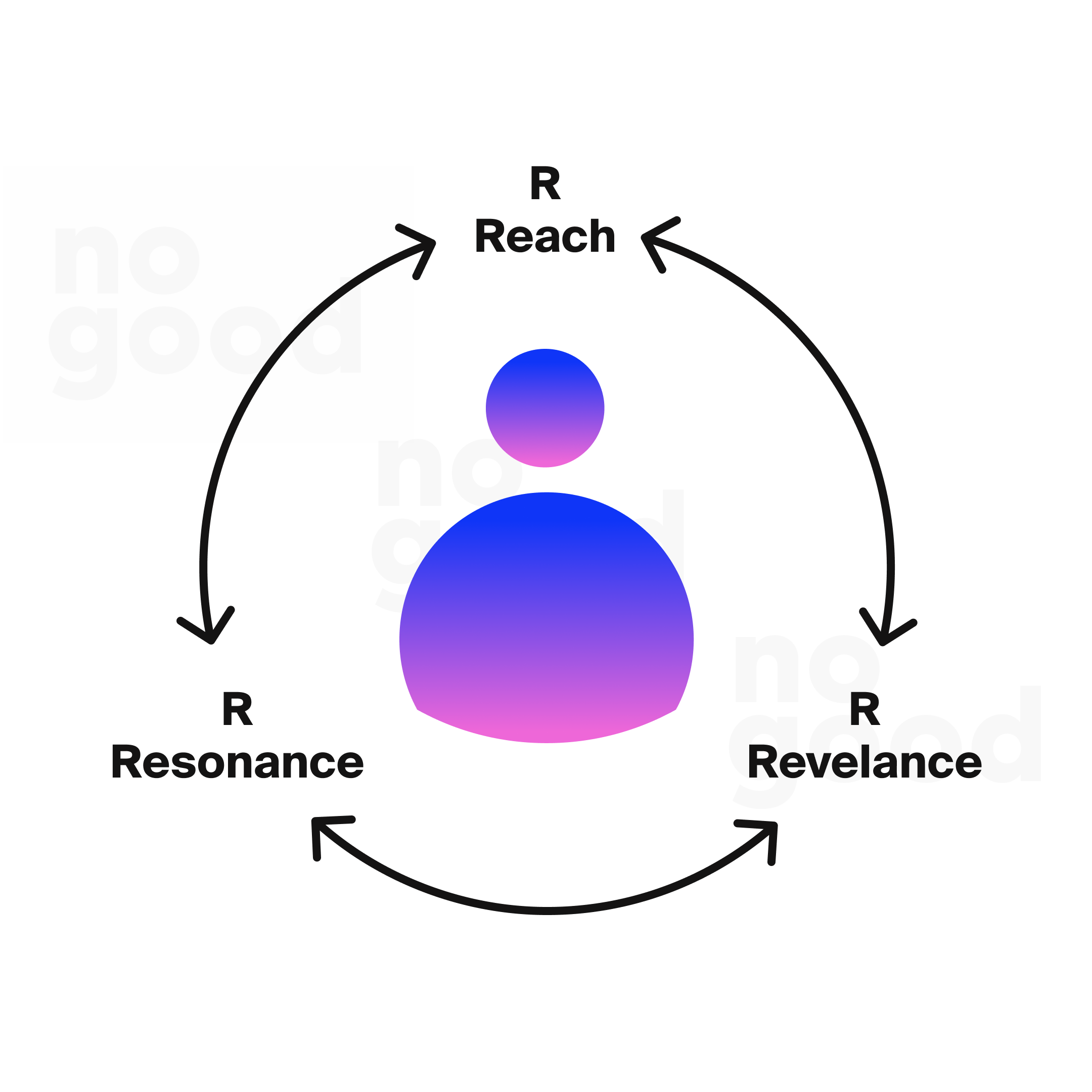
- Relevance. The right type of influencer is necessary to reach your desired niche audiences. If your brand is known for selling beef jerky, it would be a poor move on your end to reach out to a known vegan creator – their audience is vastly different from the one you want to tap into, and the influencer’s regular content would not align with your product. You’re looking for someone with a love for things related to your product and appeals to carnivores – so that influencer social media users have dubbed “king of the grill” shows promise. Just because they’re an influencer doesn’t guarantee success. They have to speak to the audience personas that your brand caters to make your marketing tactic land.
- Reach. This tenant of influencer marketing sounds like it deals only with extremely popular creators with a staggering following count. That isn’t necessarily the case! Revisiting the 4 types of influencers shows us that it’s not the quantity of followers a creator has but rather the quality. People rely on the social proof influencers provide, and if they are loyal to that creator, they can be valuable additions to your brand. The idea is that your relationships with influencers draw in their followers, which in turn can be converted into customers for your product or service.
- Resonance. This relates to the engagement a creator generates with users in relation to your brand. One of the easiest ways for influencer content to fail is if the creator chosen fails to resonate with the audience. This can come in the form of appearing out of touch, disinterested, or inauthentic. Viewers are extremely picky about the content they choose to invest time (and potentially money) in and refuse to share the time of day with anything that doesn’t hit home with them. Give your audience the credit they deserve and curate people in your influencer strategy that will connect best with them.
Content inspiration lookbook
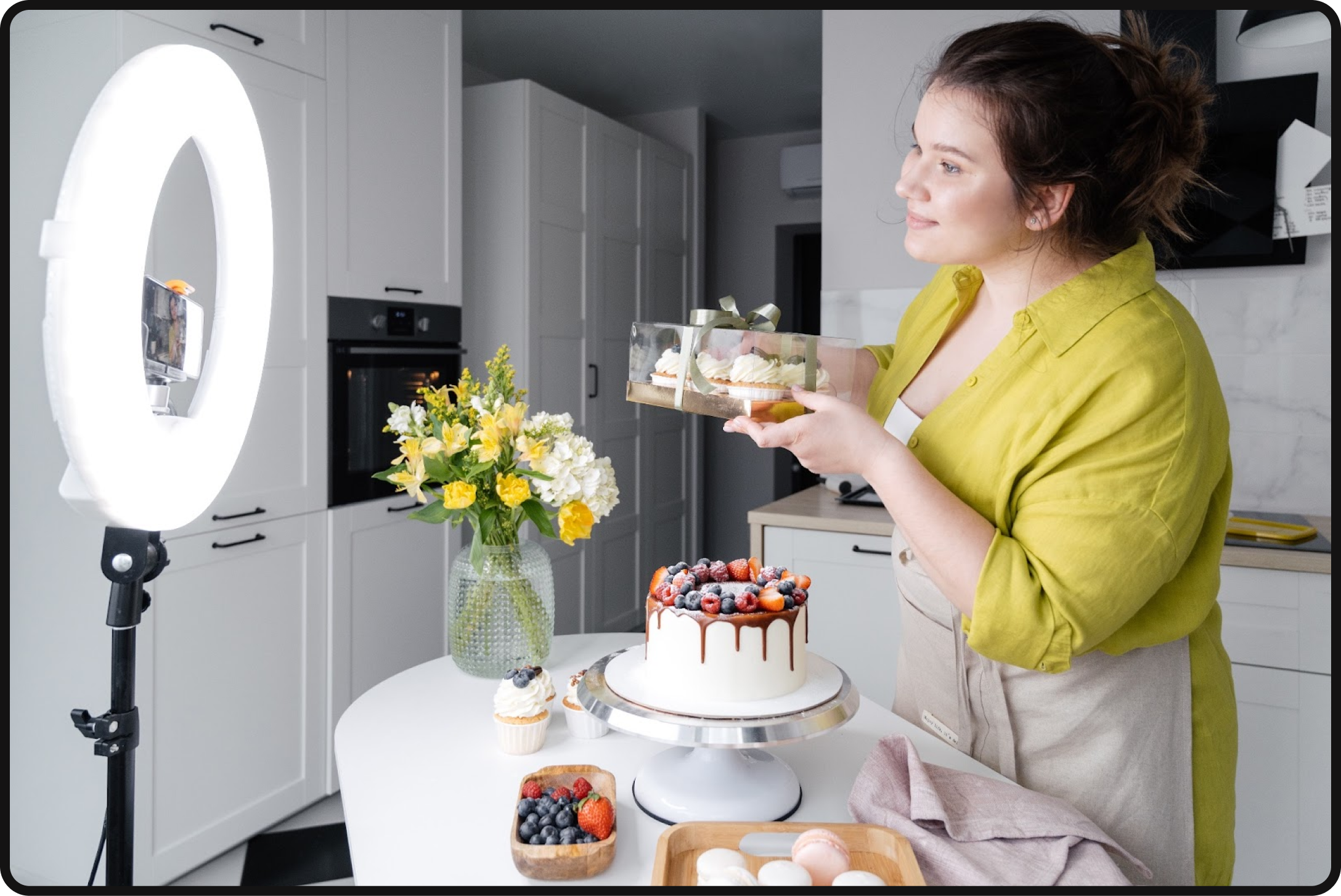
What should your influencers be posting? There’s a variety of great content that marketers request from their influencers across many different industries and social media platforms that work well. Here are a few of the classics to get the ball rolling!
- Unboxings. There’s nothing more exciting than the unknown – giving each unboxing video the potential to look and feel like Christmas Day. Your influencers can show their anticipation and wonder upon receiving packages from your brand, and excitedly share their initial opinions. Unboxings remain a popular video format for user-generated content, and can work exceptionally well for unknown brands or for brands looking to up their social media marketing during new releases.
- Reviews and testimonials. This style of video is great not only for showcasing good reviews for your product but to drop discount codes. After seeing the positive response to the product, viewers are already incentivized to make a purchase. Seal the deal by having your influencers share a promo code to make it simply irresistible. A warning in advance, though – if the reviews or testimonials do not come across as genuine, your audience will sniff it out. Don’t risk cancellation for your influencer (like that of TikTok’s “mascara-gate”) or your brand, and ensure all feedback from listed creators is authentic.
- Demos. Sometimes, the best way to get people to read the FAQ page is to just show them. Influencers can demonstrate the use of a product (which works really well for complicated products with multiple applications or parts) to take the guesswork out of the product. If they can do it, so can your customers!
- Lifestyle application. There’s no better way to sell your product than by showing your customers how they can incorporate it into their day-to-day lives! Have your influencers pull outfits for a cool #ootd featuring your product, or show their “get ready with me’s” and daily activities, framing your brand as the central focal point.
- Creative application. Let your influencers’ imaginations run wild if it aligns with your marketing goals! These can come in the form of ASMR, pop culture references, comedic skits, or collaboration with multiple influencers.
Examples of successful Influencer Marketing Strategies
You get the concept, but it’s easier to see it in practice. Here are three standout examples of influencer marketing to draw inspiration from.
1. Parade x Micro-Influencers
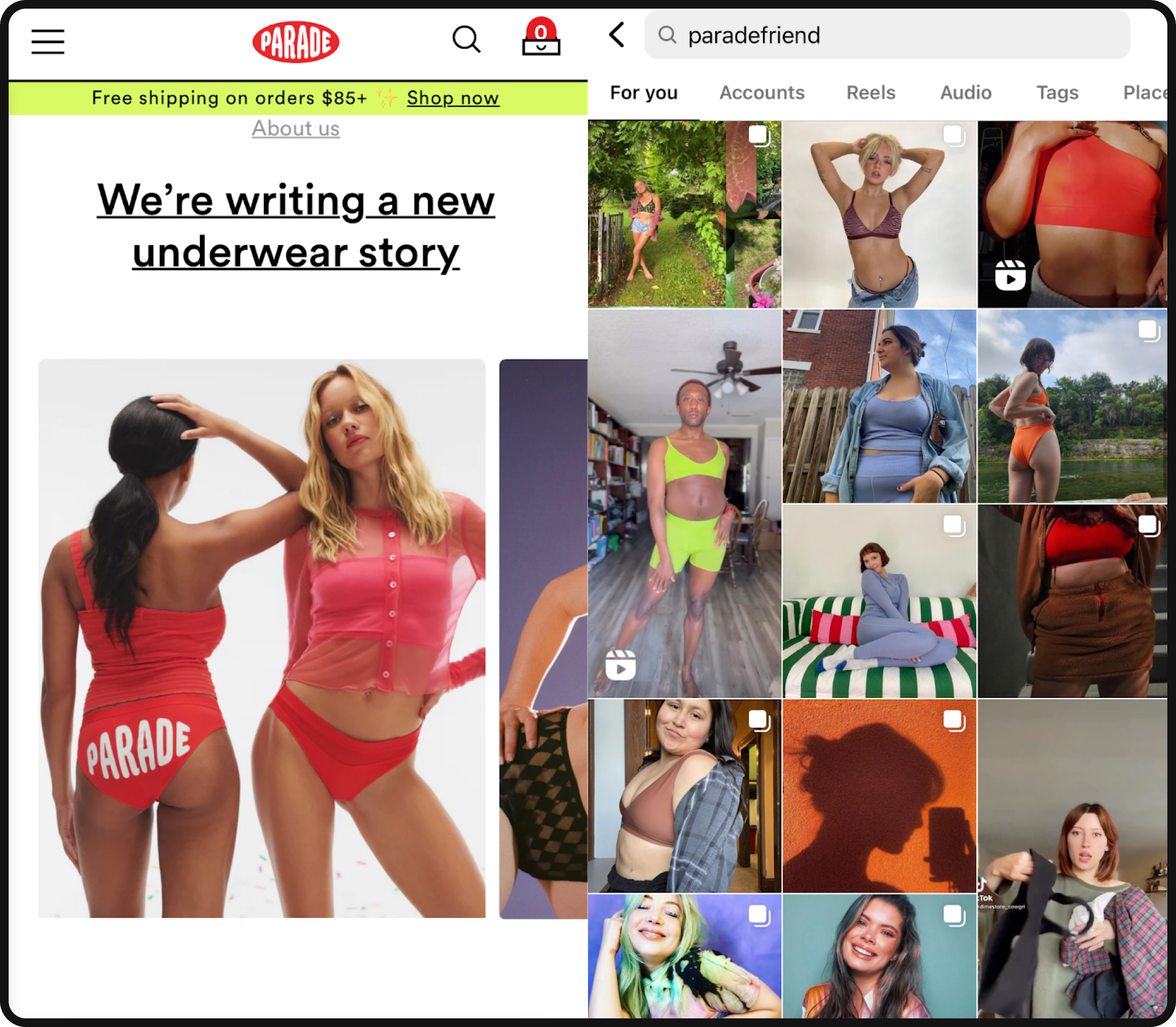
Parade should be considered a leader in micro-influencer marketing because they were among the first noticeable brands to fully embrace it with a campaign in 2019 DMing 6,000 Instagram users offers of free gifts in exchange for posts about their product. Not many of these Instagrammers had amassed enormous followings, but they served a specific purpose in Parade’s marketing strategy nonetheless. The lingerie industry seems overly saturated with supermodels and other recognizable faces, which is what makes Parade different – their products grace the pages and bodies of “regular people,” making Parade a realistic, attainable, and relatable brand for fellow “regular people” to shop with.
2. starface x Pink Pantheress
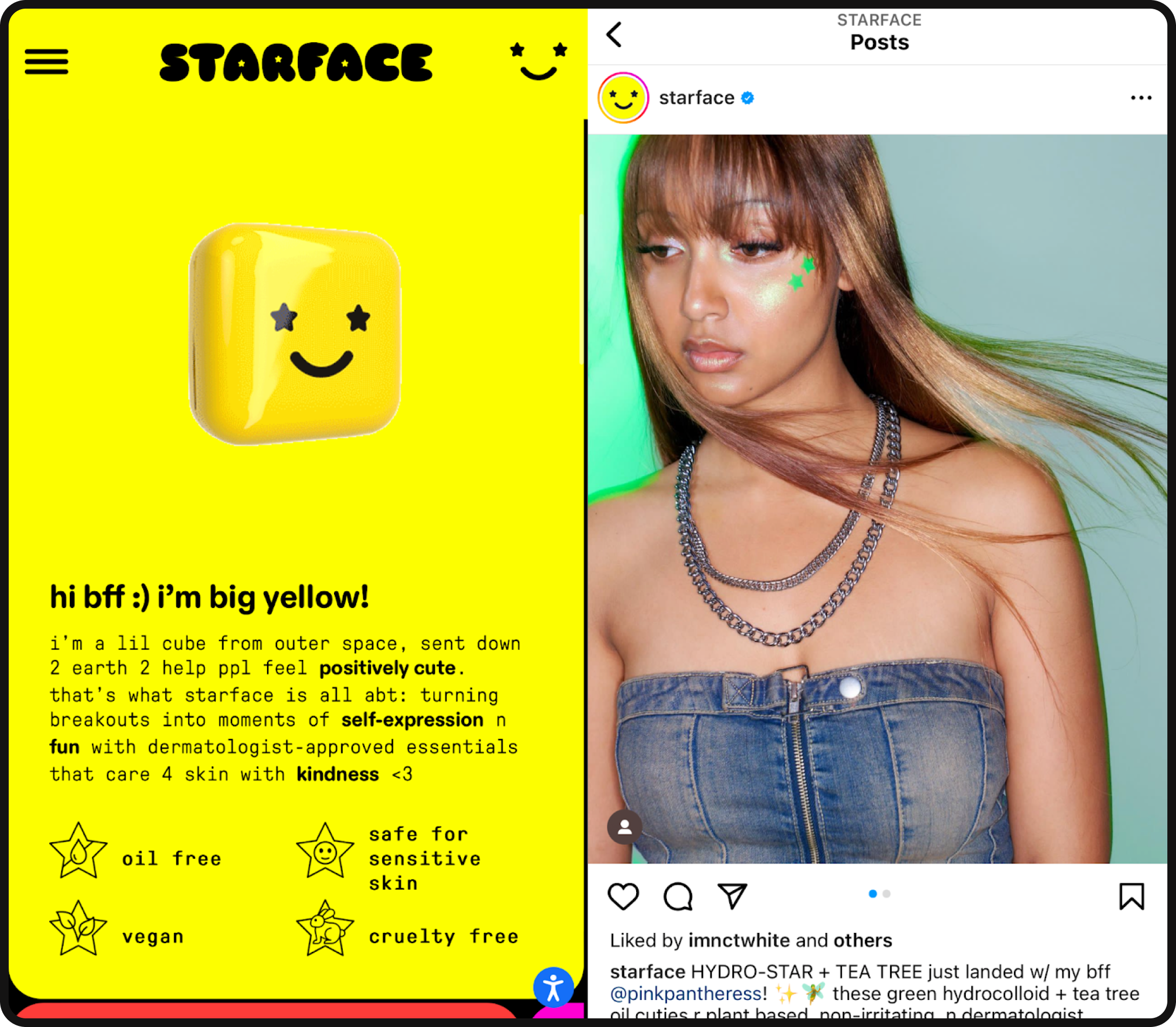
If you haven’t seen starface’s newest partner, you’ve definitely heard her hit song, “Boy’s a Liar” floating around on social media (if you haven’t… we highly recommend checking it out). Artist Pink Pantheress (Vicky Beverly Walker) is the face of the green hydrocolloid pimple patch release from starface, and she’s the perfect example of a brand that did its research to select the best voice to represent them. Walker’s aesthetic as a singer blends seamlessly with starface’s product – but most importantly, her fanbase is mostly comprised of Gen Z. This demographic is known for ditching filters and embracing flaws, zits included. Because starface as a brand encourages self-love and celebration, its target audience is one and the same as Walker’s, making this collaboration a match made in heaven. When paired with the right person, influencer marketing strategies can really benefit both parties’ images and expand their reach to the right people.
3. Oaktcha x Paul Reactss
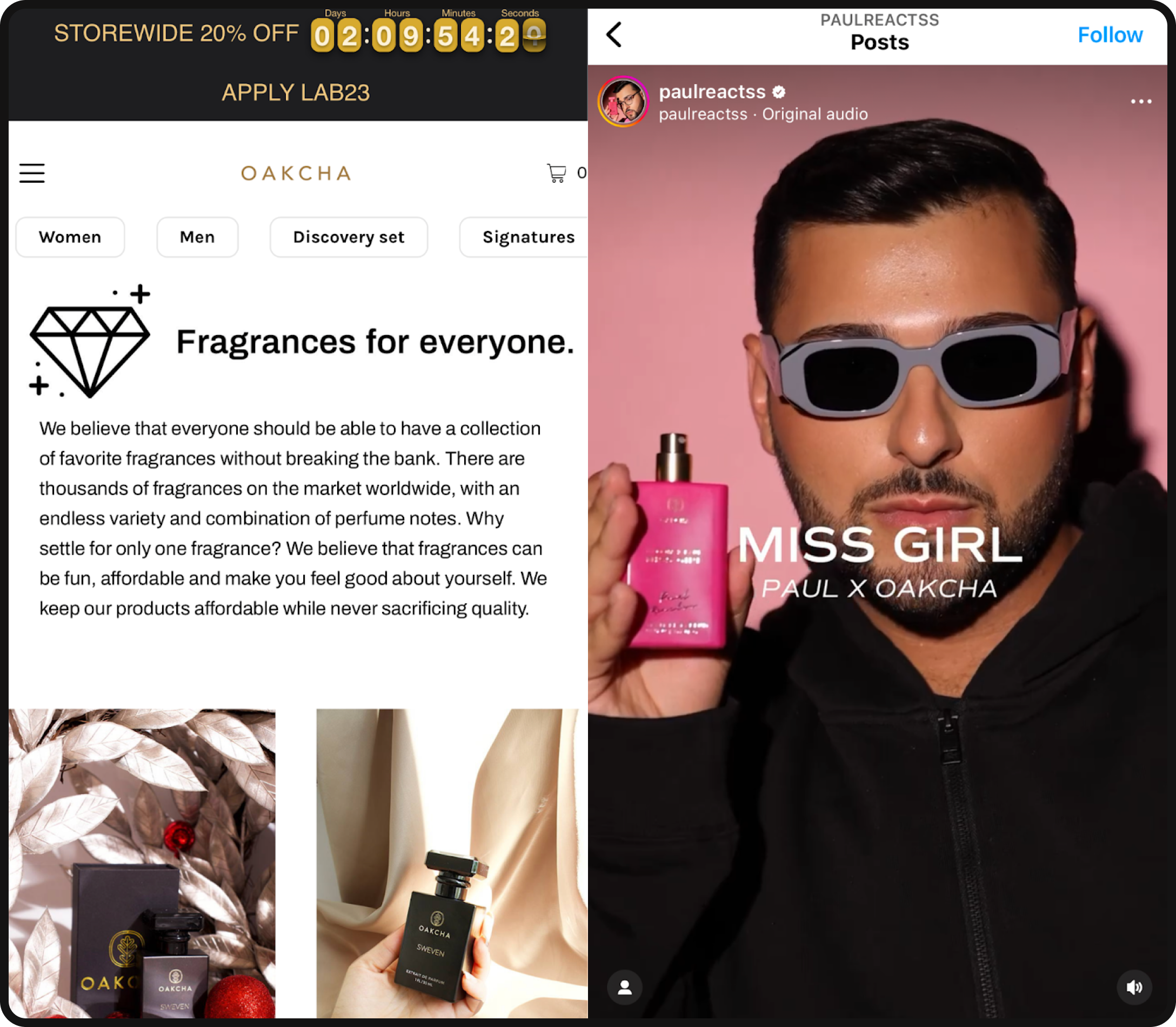
Perfume connoisseur Paul Reactss made a name for himself by building an impressive collection of fragrances and taking suggestions and questions from his viewership to recommend scent profiles, find dupes for luxury items, and review new launches. So when Oaktcha (a popular perfume company known for recreating high-end fragrances for a fraction of the price) reached out to collaborate, the scent Miss Girl was born (a tribute to one of Paul’s catchphrases). The response was immense, and the limited edition fragrance went viral – not because of the notes of sour black cherry and caramel, but because of the perfume influencer’s signature gracing the bottle creating a sense of reliability that resonated with Oaktcha’s audience.
Steps to start building your influencer marketing strategy
Now that you’re well-versed and convinced influencer marketing is a good fit for you, it’s time to set an influencer marketing budget and find social influencers. Not sure where to start? Here are a few strategies to explore to begin your influencer marketing campaign.
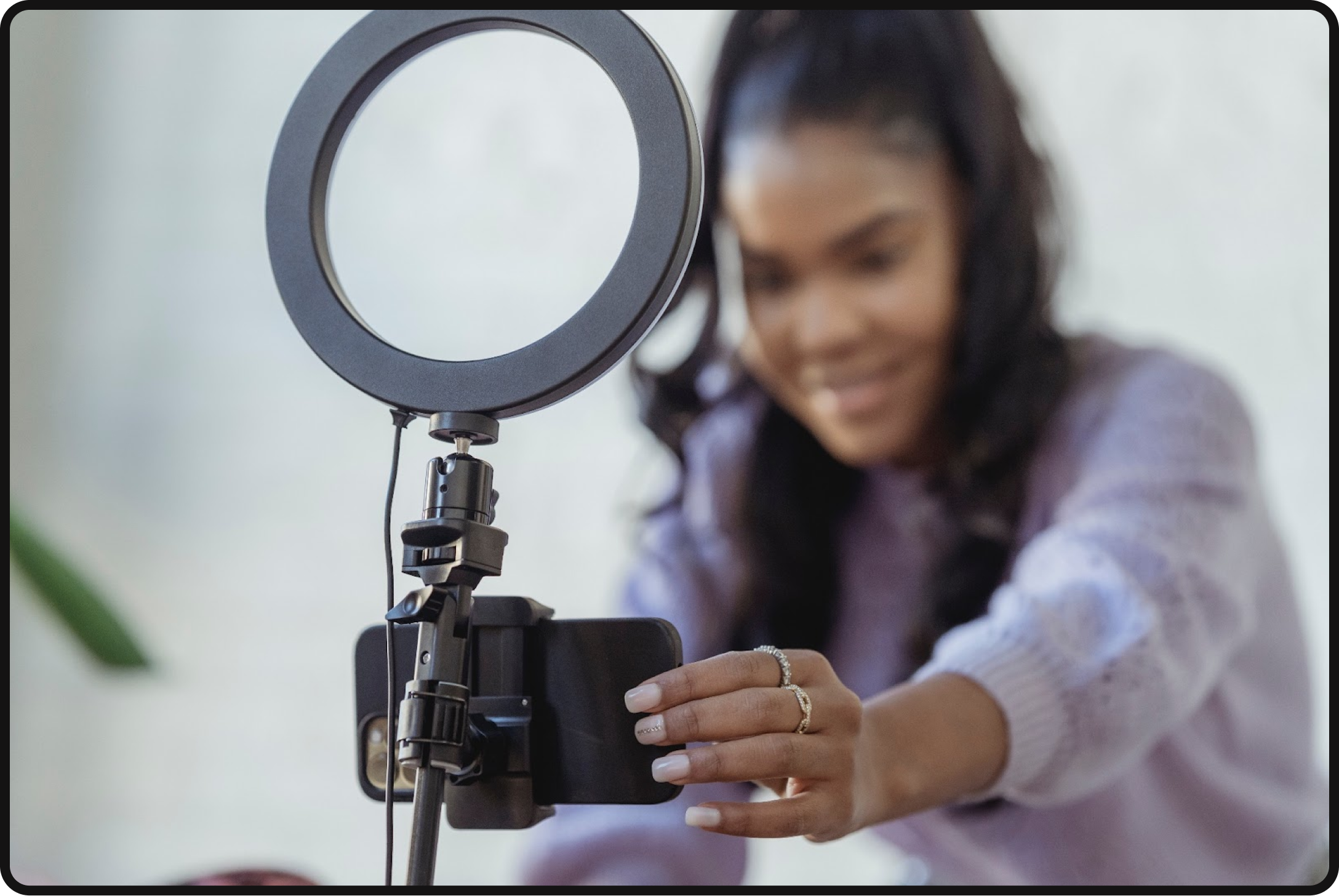
- Marketing budget & goals. The inaugural step in crafting your influencer marketing strategy is to clearly outline your marketing objectives and allocate a suitable budget for your campaign. Defining your goals and setting an annual budget is crucial to maintaining consistency and coherence throughout your influencer marketing efforts. Some of the key objectives to consider encompass:
- Amplifying brand awareness and fortifying brand identity.
- Augmenting your brand’s social media following.
- Garnering increased shares, comments, and likes on your content.
- Enhancing your marketing funnel or sales pipeline through promotional activities or enticing lead magnets.
- Facilitating a surge in consumer purchases.
- Elevating your search engine optimization prowess by securing valuable backlinks.
- Selecting the campaign approach: Once you’ve established your marketing goals and budget, the next step in developing your influencer marketing strategy involves choosing the most suitable type of campaign. The approach you select should align with your objectives and cater to the preferences of your target audience. There are various options to consider, including:
- Guest posting: Collaborating with influencers to create informative and engaging guest posts that showcase your brand’s expertise and offer value to their audience.
- Sponsored content: Partnering with influencers to create content that promotes your products or services, seamlessly integrated into their regular content.
- Mentions: Requesting influencers to mention your brand or products in their social media posts or other content.
- Contests or giveaways: Running contests or giveaways in partnership with influencers, encouraging their audience to participate and engage with your brand.
- Takeovers: Allowing influencers to take control of your social media accounts for a specific period, offering their unique perspective and content style.
- Affiliates: Setting up affiliate marketing partnerships where influencers earn commissions for driving sales to your products or services through their unique affiliate links.
- Discount Codes: Providing influencers with exclusive discount codes for their followers, motivating them to make purchases on your platform.
- Craft engaging content for your campaign: After selecting your campaign type and medium, the next critical step is to develop captivating content that resonates with your target audience. Regardless of the campaign’s appeal or the product’s alignment with the market, your messaging and content play a pivotal role in captivating consumers and maintaining their interest. Here’s how to create compelling content for your influencer marketing campaign:
- Understand your audience: Before crafting content, it’s imperative to have a profound understanding of your target audience and their preferences. Your messaging should align seamlessly with their interests and values.
- Align with the influencer’s audience: Tailor your content to harmonize with the influencer’s audience. The more your messaging syncs with their followers, the easier it becomes for the influencer to seamlessly incorporate your brand into their content.
- Strategic content creation: Create content that not only promotes your product or service but also offers value, entertainment, or a solution to the audience. The content should resonate with the influencer’s style and the chosen campaign type.
- Visual appeal: Visual content such as images and videos often outperform text-based content in influencer marketing. Ensure that your visuals are attention-grabbing and professionally produced.
- Narrative storytelling: Weave a compelling narrative around your brand or product to engage the audience emotionally. Storytelling can make your content more relatable and memorable.
- Incorporate influencer’s voice: Encourage influencers to have creative input in the content creation process. Their authenticity and personal touch can make the content more genuine and relatable to their followers.
- Clear Call to Action (CTA): Clearly define what you want the audience to do after consuming the content. Whether it’s to visit your website, sign up for a newsletter, or make a purchase, a CTA guides the audience’s next steps.
- Review and feedback: Collaborate closely with the influencer during content creation. Provide feedback and revisions to ensure that the content aligns with your brand’s messaging and meets your campaign objectives.
- Compliance and transparency: Ensure that the content complies with advertising guidelines and is transparent about the influencer-brand partnership.
- Start the outreach process: Cold emails or DMs are a classic and sometimes effective strategy. Reaching out to influencers via direct message or email is an easy way to get in touch. These are a little risky because there is a possibility of getting ghosted or left on read, but sometimes, the most efficient path is the most direct.
- Social media stunts: Feeling creative? Show influencers what you can offer them by creating a social media campaign centered around hiring them! Competitions, challenges, and other activities are great ways to get influencers to engage – or to have their followers persuade them to.
- Influencer programs: Have your potential collaborators apply directly to you! An influencer program allows creators to submit their interests and qualifications to your brand directly, where you can sift through applications and decide for yourself.
- Monitor and enhance your strategy: Continual assessment and refinement of your influencer marketing strategy is pivotal to its long-term success. Tracking campaign performance enables you to make informed decisions regarding ongoing collaborations with influencers and adapt your strategy for better outcomes. Here’s a breakdown of this crucial step:
- Evaluate goal achievement: The initial step in assessing your campaign’s effectiveness is to ascertain whether it successfully reached your predefined objectives. Key performance indicators (KPIs) provide valuable insights in this regard.
- Measure key performance indicators (KPIs): Use the following KPIs to gauge the success of your influencer marketing campaigns:
- Brand awareness: Assess website traffic, the volume of social media or PR mentions, and the quality of backlinks generated by your campaign. These indicators help you gauge the reach and impact on brand visibility.
- Audience building: Track growth in social media followers and the number of opt-ins or sign-ups resulting from your influencer collaborations. These metrics reflect the campaign’s ability to expand your audience.
- Engagement: Analyze the level of engagement garnered by your content, including the number of likes, comments, and shares. High engagement signifies that the content resonates with the audience.
- Sales and ROI: Examine the campaign’s impact on lead generation, new sales, and overall return on investment (ROI). Determine the direct impact on your bottom line.
- Data analysis for optimization: Collect and scrutinize data from each campaign to identify what strategies were effective and what aspects need improvement. For instance, you can analyze whether a video reel generated more engagement than a traditional story post or evaluate the conversion rate on a dedicated landing page featuring a promo code.
- Comprehensive variable tracking: Ensure you monitor all pertinent variables of your campaign. This encompasses influencer performance, content types, posting schedules, and promotional methods. By comprehensively tracking these elements, you gain insights into how to drive superior results in future influencer marketing campaigns.
- Influencer marketing agencies: If influencer programs sound a little daunting to orchestrate, don’t worry – there’s an easier alternative! Influencer marketing agencies are a one-stop shop providing you with all the influencer marketing tools you could need. Have campaigns designed just for you, find creators that align with your vision, and have your content rolled out by the agency in a timely manner without having to lift a finger. The best part? We’ll do it for you through our Creator Network, which sources interested individuals with a variety of offerings, followers, and interests. Applicants are thoroughly vetted by our expert team, and the list of influencers gets matched with clients we believe will make excellent partners – you get all the benefits of being part of the influencer marketing industry with zero stress!






